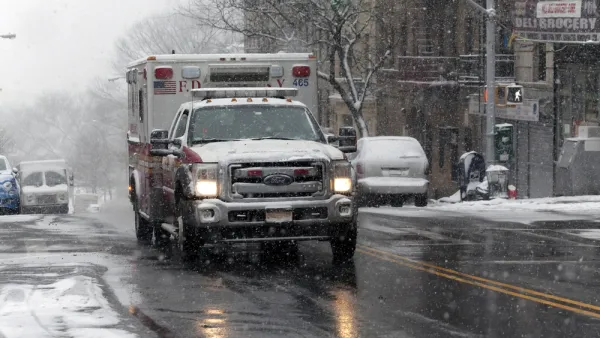The number of single households has grown three-fold since the 1950s. More sustainable and more likely to live in cities than married households, singles experience a major problem: metro areas are not planned for them but for nuclear families.
Eric Jaffe, with assistance from Devajyoti Deka of the Alan M. Voorhees Transport Centre at Rutgers University, writes about "people living alone", who he dubs "solos" (not to be confused with the transportation version: solo drivers or commuters) or singletons. According to Deka, "when it comes to housing and travel preferences, solos tend to live more sustainable lifestyles", with sustainability measured in terms of:
- Rented apartments over detached single-family-homes
- Commuting shorter distances
- Using public transit more often
One reason for the urban preference for solos is that they make more money and have more employment flexibility in cities.
But here's the paradox: "modern metro areas were largely planned and designed with the nuclear family in mind," says Jaffe. Today 28% of all households are solos. If cities want to attract solos, Deka has two recommendations:
- "Promote and enhance public transportation"
- Recognize that "contrary to much popular belief, there are twice as many elderly solos (above 65) than young ones (18 to 34)." [Perhaps that's why "solos" is used rather than the younger-sounding "singles"]. Housing choices are key: Single-occupancy-studio rentals can play a vital role
Dr. Deka's paper, "The Living, Moving and Travel Behaviour of the Growing American Solo: Implications for Cities", was published July 05 in Urban Studies. The abstract is available free, while the text requires a subscription to Urban Studies.
Readers may recall that the growing numbers of singletons was the topic of NYU sociology professor Eric Kleinberg's 2012 book, "Going Solo"; four articles on it can be accessed below under "Related".
FULL STORY: The Rise of People Living Alone Has Led to More Sustainable Cities

Analysis: Cybertruck Fatality Rate Far Exceeds That of Ford Pinto
The Tesla Cybertruck was recalled seven times last year.

National Parks Layoffs Will Cause Communities to Lose Billions
Thousands of essential park workers were laid off this week, just before the busy spring break season.

Retro-silient?: America’s First “Eco-burb,” The Woodlands Turns 50
A master-planned community north of Houston offers lessons on green infrastructure and resilient design, but falls short of its founder’s lofty affordability and walkability goals.

Test News Post 1
This is a summary

Analysis: Cybertruck Fatality Rate Far Exceeds That of Ford Pinto
The Tesla Cybertruck was recalled seven times last year.

Test News Headline 46
Test for the image on the front page.
Urban Design for Planners 1: Software Tools
This six-course series explores essential urban design concepts using open source software and equips planners with the tools they need to participate fully in the urban design process.
Planning for Universal Design
Learn the tools for implementing Universal Design in planning regulations.
EMC Planning Group, Inc.
Planetizen
Planetizen
Mpact (formerly Rail~Volution)
Great Falls Development Authority, Inc.
HUDs Office of Policy Development and Research
NYU Wagner Graduate School of Public Service



























